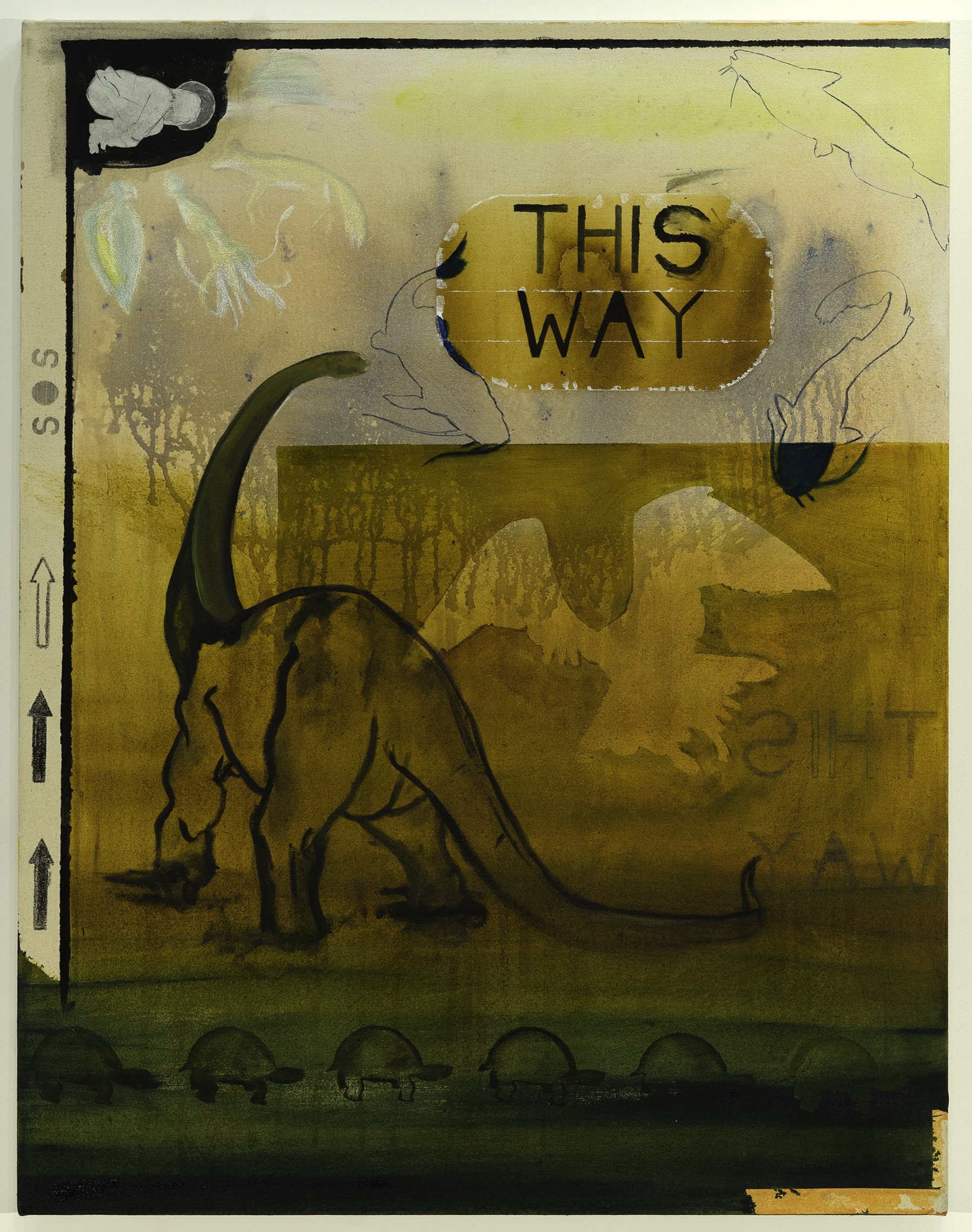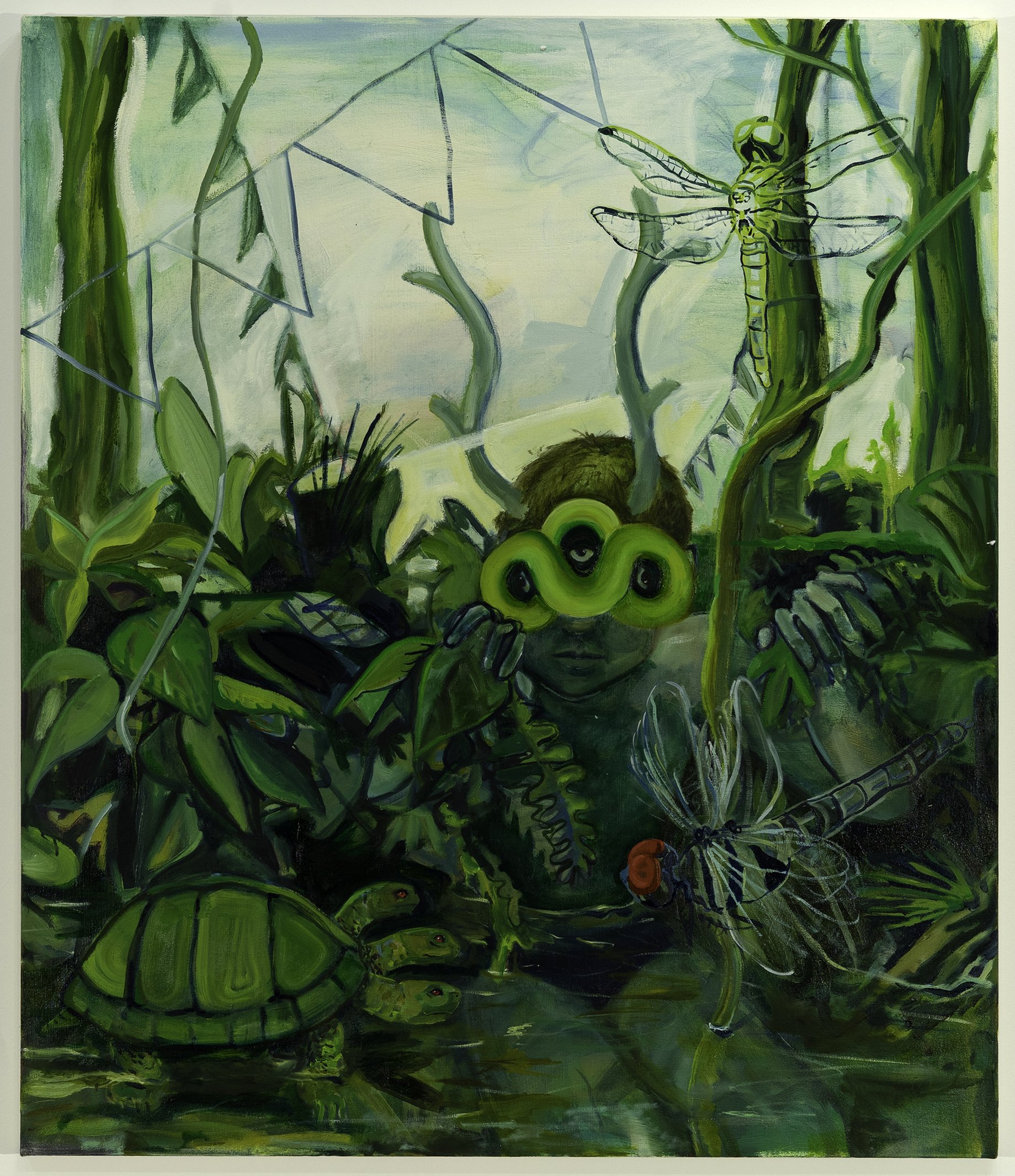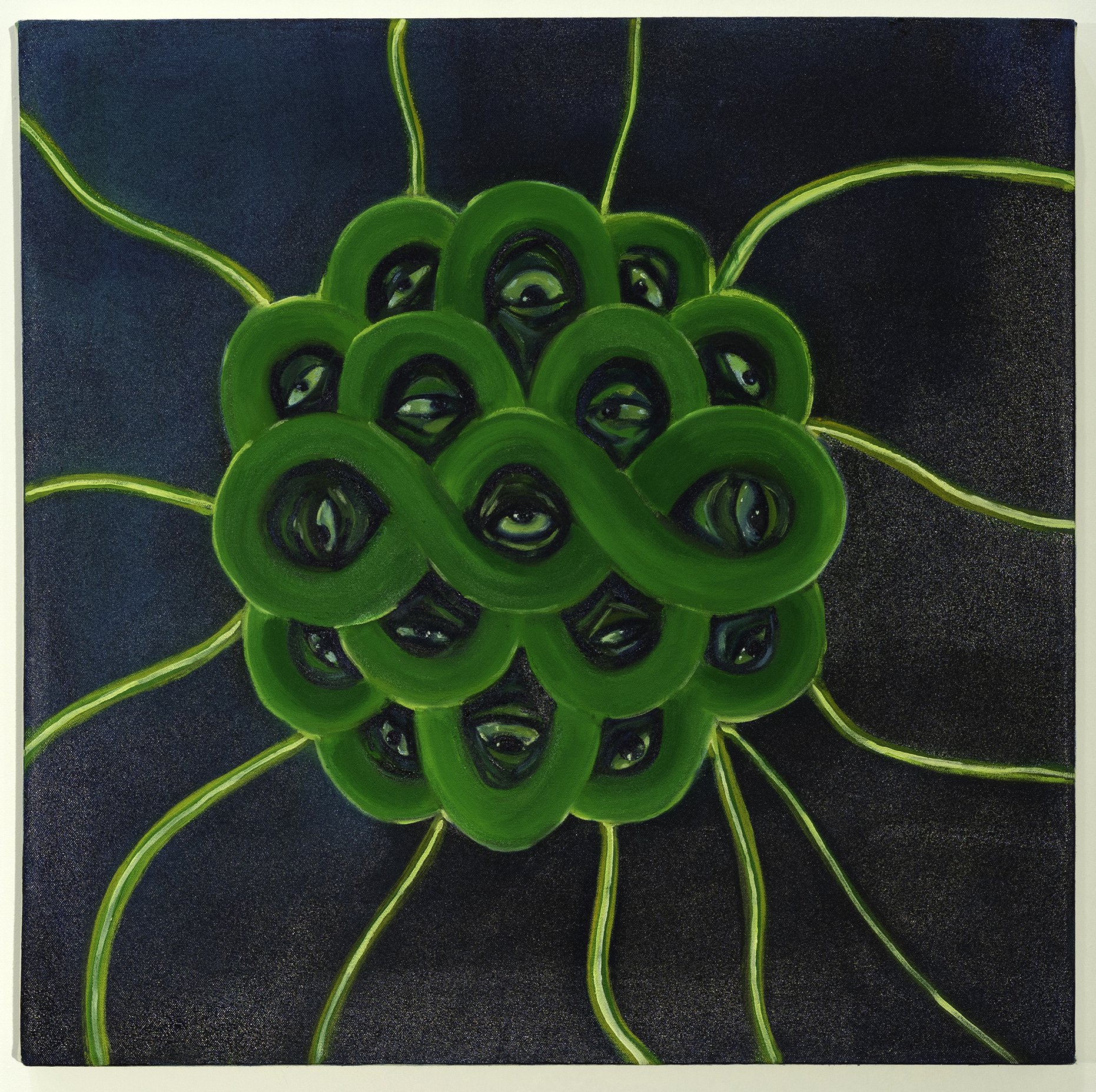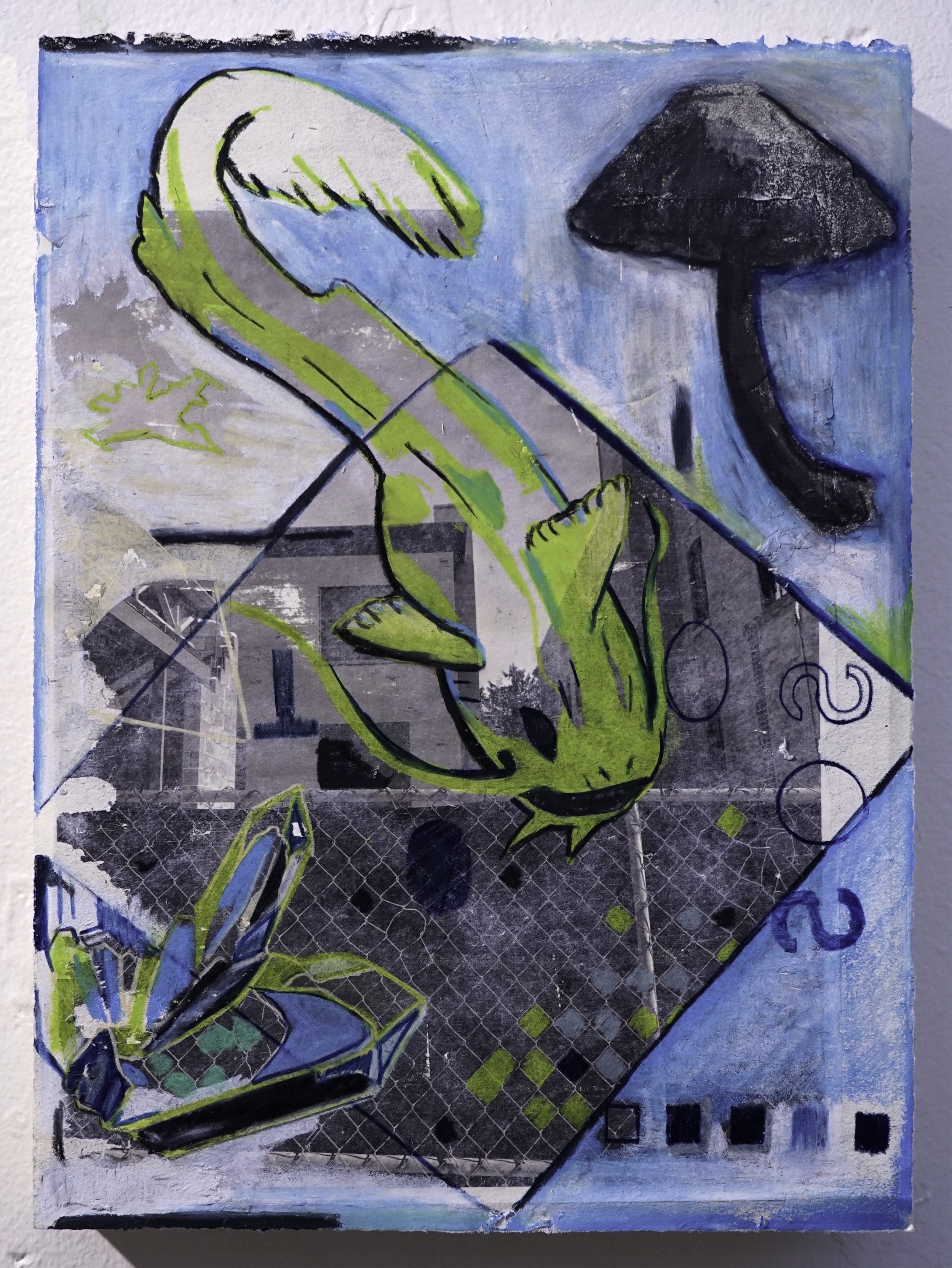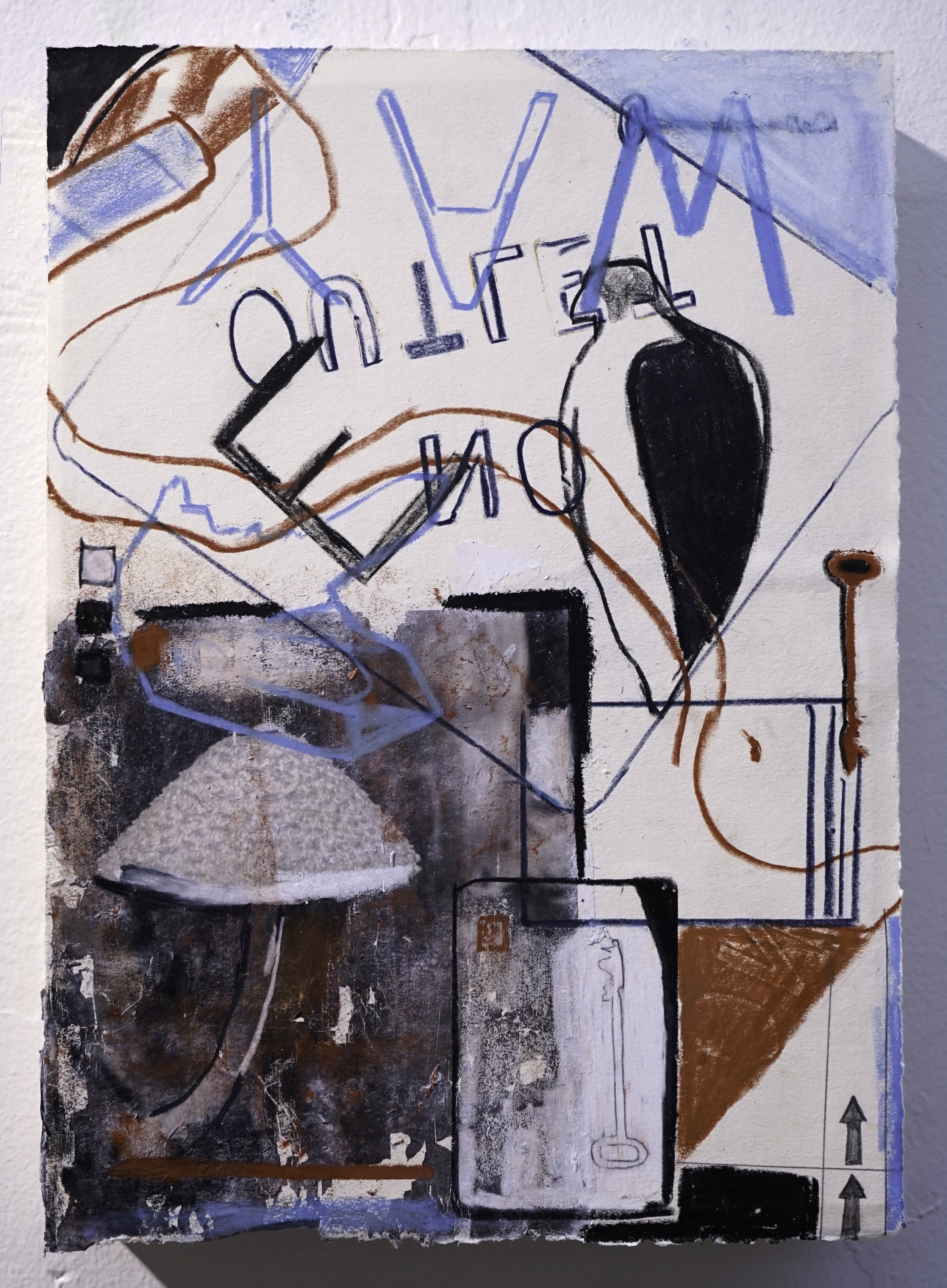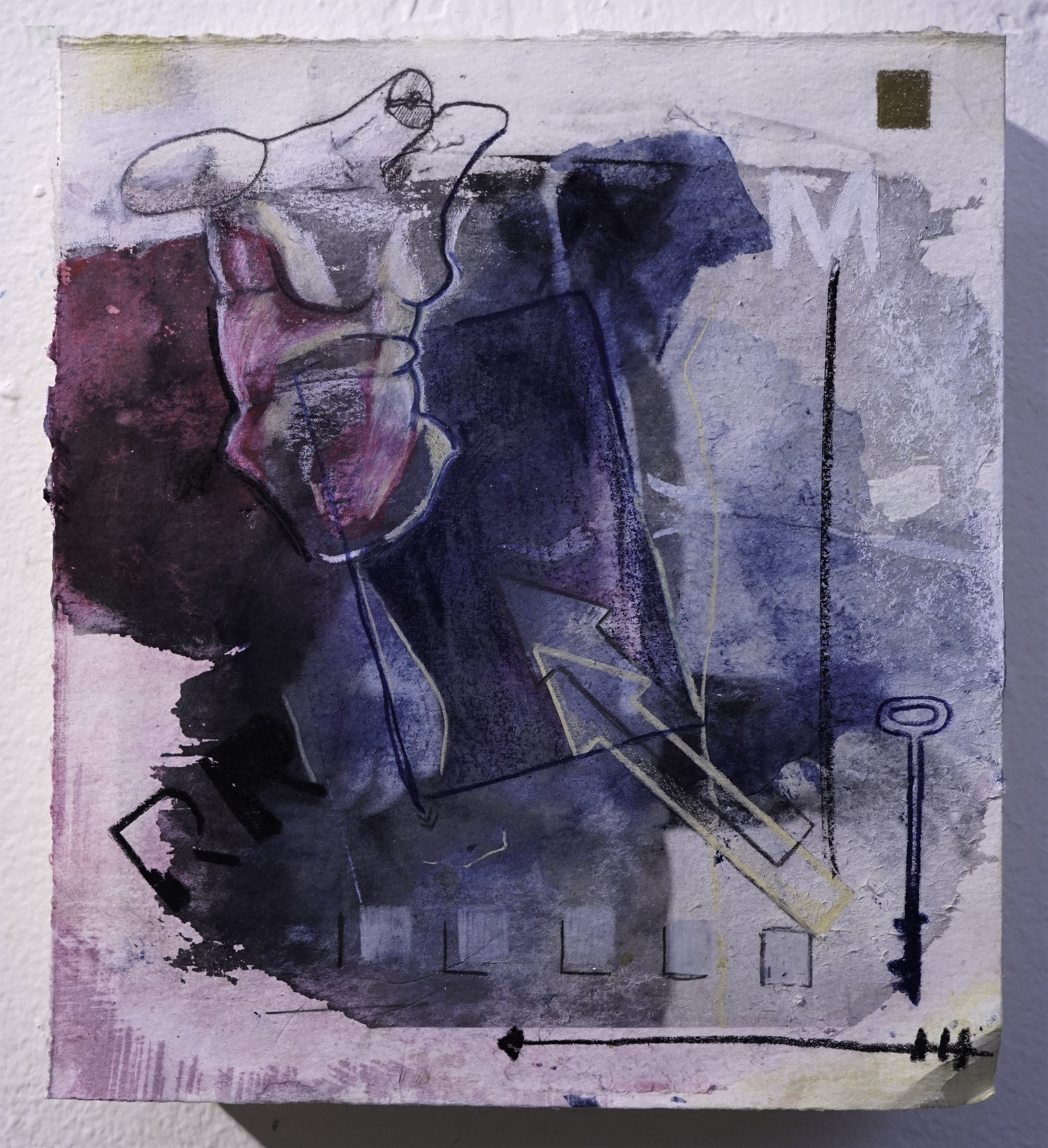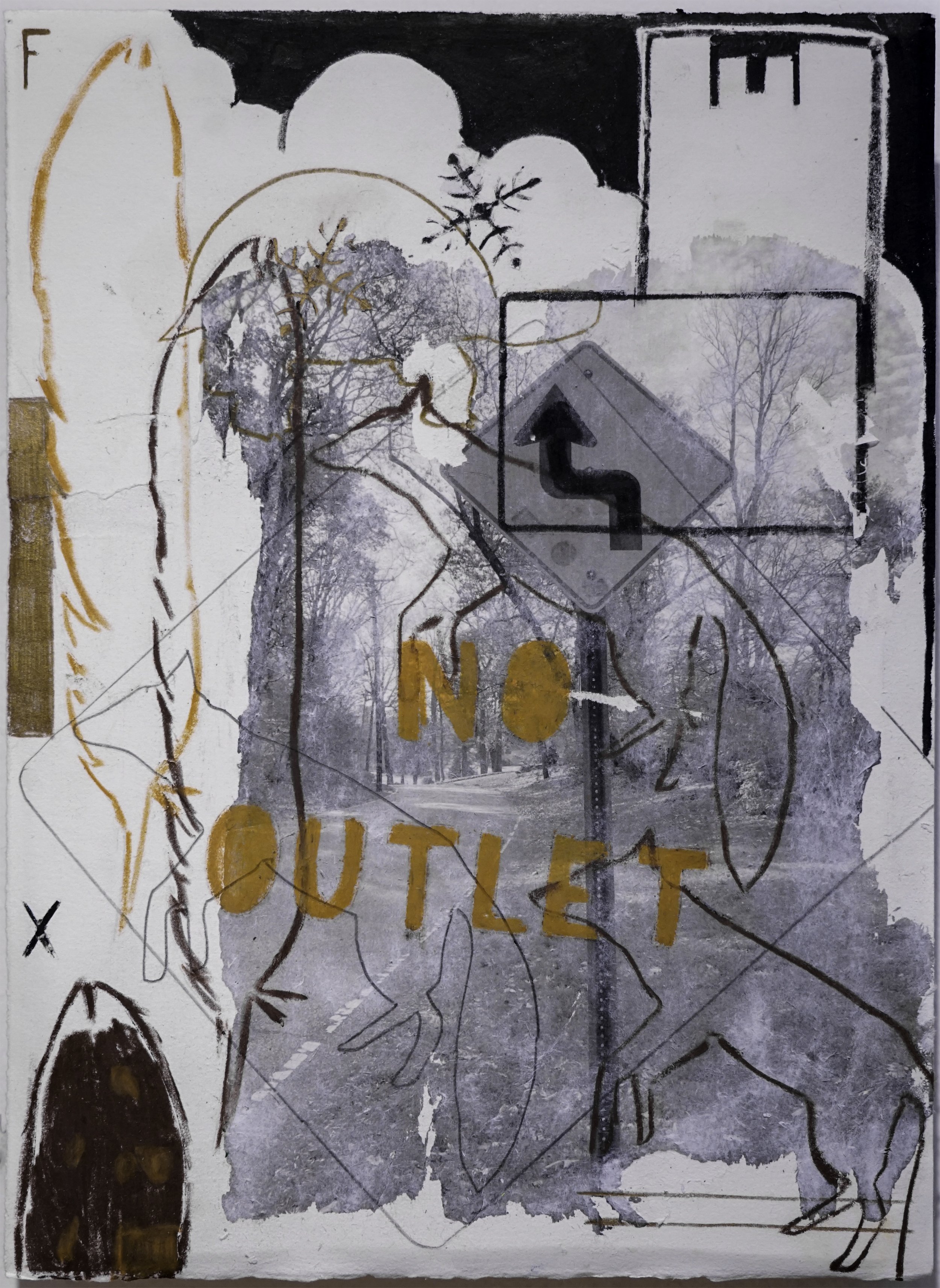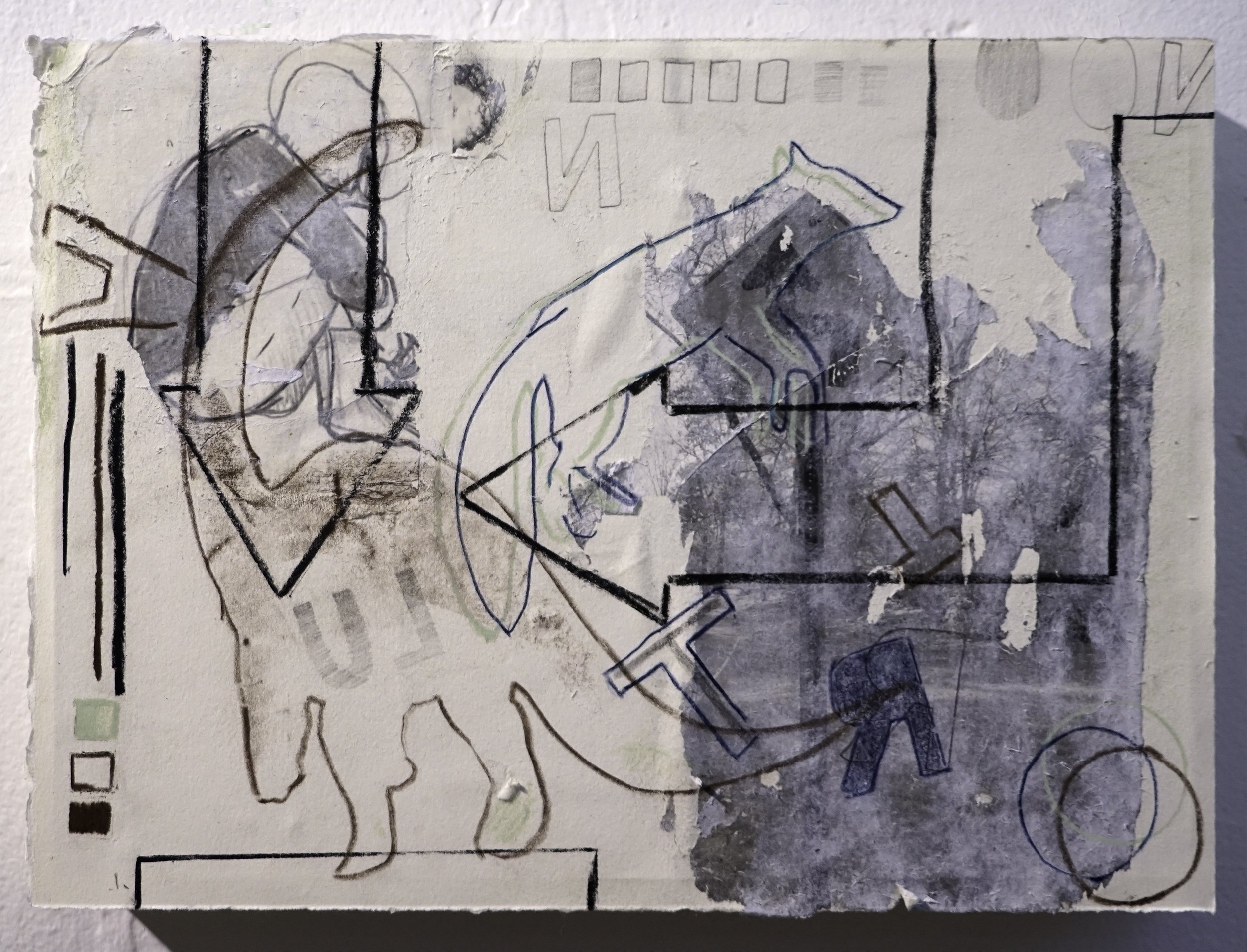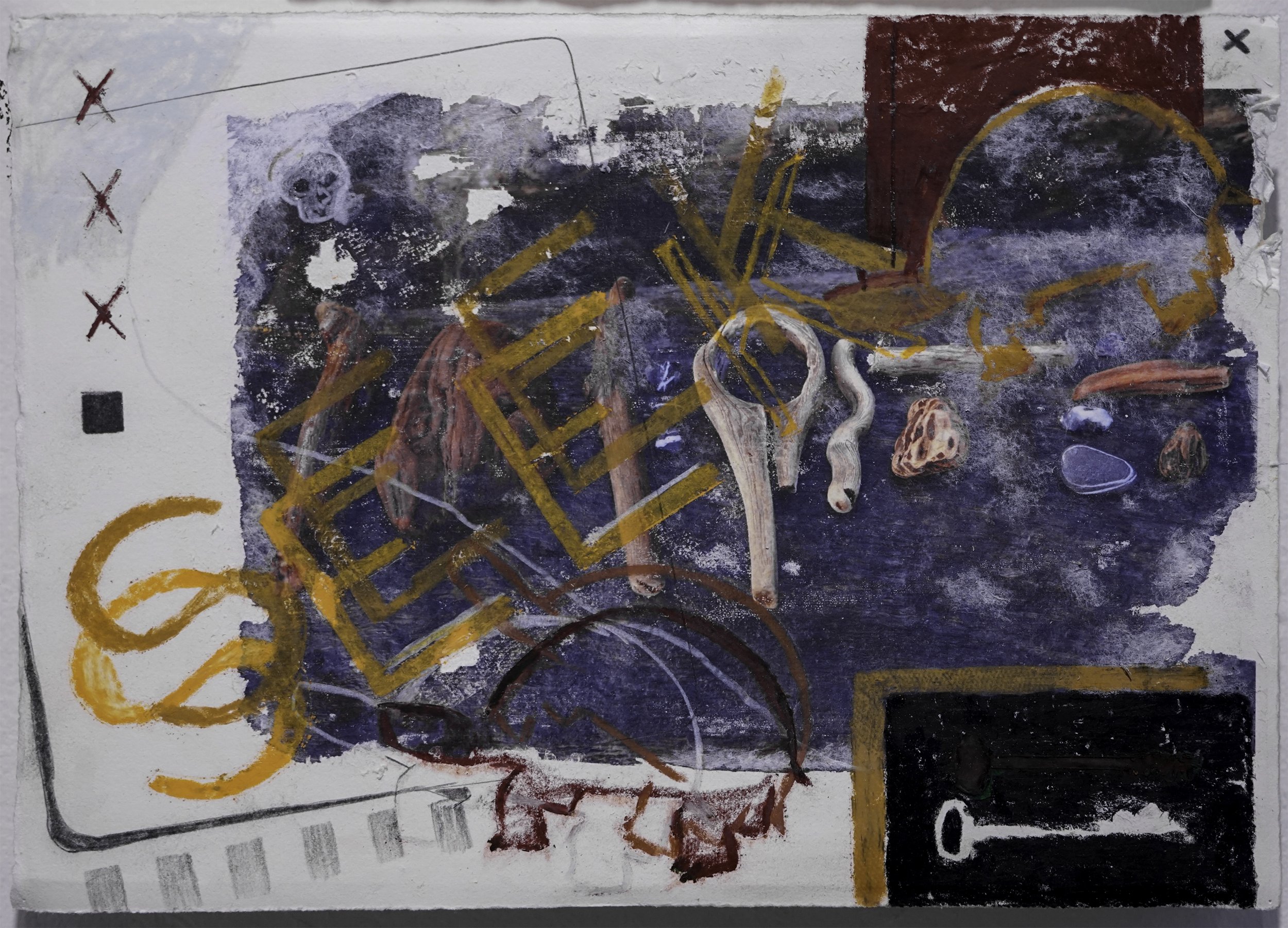Directions to Another Day
When does an arrow become a symbol of hope?
How are we to understand a boy becoming a snake with two heads?
At what point do symbols fail to communicate in our divided society?
I was raised as a Christian in the Bible Belt of the American South. As a child I showed a deep interest in spirituality, once bringing six copies of the Bible on vacation because I didn’t know which translation I would want to read. I have experienced firsthand the double-edged sword of religion and, by extension, other value-based collectives (politics, nationalism, etc.) can be. Such organizations offer community, peace of mind, and support. They promise that “all are welcome” (the word “all” in this case is highly subjective.) Yet, over time, these groups can calcify, becoming rigid, brittle, and intolerant. They divide people and ostracize their fellow humans, damning them to concepts of hell and unworthiness.
From these entrenched perspectives spring the roots of many of the deep divides fracturing society today. In an age where facts have become suspect and rational thinking is being threatened, I have become interested in our most basic level of communication: symbols and their meanings. Even in today’s world of disputed realities, there remain certain constant symbols denoting nearly universally agreed-upon meaning. When driving on the freeway, it is understood by all licensed drivers that a curved arrow on a yellow sign indicates an imminent turn. I am interested in appropriating these “unquestioned” symbols. I aim to use their immediacy and effectiveness to connect with broader audiences. Combining these direct symbols with less obvious, more nuanced symbols, I attempt to raise questions about the individual and the current state of our world. My work is the result of meditations on the human species’ collective identity crisis. A crisis traced to a collective existential loneliness. I ask questions originating from this existential perspective.
Drawing upon the pain and anxiety of a world divided by religion, socio-economic disparity, culture wars, racism, sexism, capitalism, and an ecosystem on the brink of disaster, I attempt to balance these hard truths with moments of hope, optimism, and play. My practice strives to turn my intangible meditations into a visual representation. I layer symbol over scene and figure over symbol, collaging together stories intended to evoke questions from the semi-conscious mind: What are we? Why are we? What is Nature’s role in our lives?
Are we still part of Her, or have we lost our way?
Using familiarity and mythology as vehicles for my allegories, I construct artworks to create a common ground where meaning may once again take root and grow.
